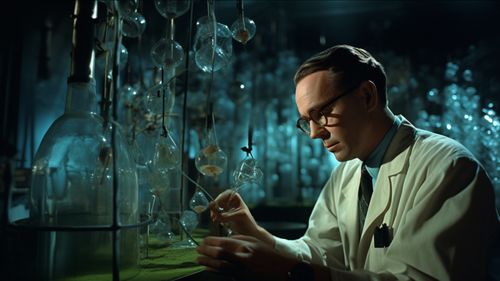A Pioneer of Genetics: Oswald Avery's landmark experiment
Dec 06, 2023 · 2 mins read
0
Share

Oswald Avery was one of the first molecular biologists and a pioneer in immunochemistry, but he's best known for one experiment that changed life as we know it. In 1944, he spearheaded the groundbreaking Avery-McLeod-McCarthy Experiment: a milestone in genetics research.
Save
Share
Working alongside Colin MacLeod and Maclyn McCarty, Avery investigated the transformation of non-virulent bacteria into virulent strains, targeting the responsible element by examining the pneumococcus bacterium.
Save
Share
The experiment aimed to identify whether DNA, RNA, or proteins carried the hereditary information necessary for transformation.
Save
Share
The purification procedure Avery undertook consisted of isolating and purifying the bacterial components, treating them with enzymes to degrade proteins and RNA, leaving behind DNA.
Save
Share
Astonishingly, when DNA remained, the non-virulent bacteria transformed into virulent forms, establishing DNA as the carrier of genetic information.
Save
Share
Avery's meticulous approach and rigorous experimental design solidified the understanding of DNA as the hereditary material, reshaping the course of genetics.
Save
Share
Despite initial scepticism, the findings of the Avery–MacLeod–McCarty experiment were quickly confirmed and profoundly influenced subsequent genetic research, paving the way for the DNA-focused era in biology.
Save
Share
Avery's findings, initially overlooked, gained recognition posthumously, earning him acclaim as a pivotal figure in the discovery of DNA's role in heredity.
Save
Share
His research laid the groundwork for Watson and Crick's elucidation of DNA's structure in 1953, further validating Avery's pivotal contributions.
Save
Share
Oswald Avery's relentless pursuit of scientific truth revolutionized genetics, unraveling the fundamental role of DNA in passing on genetic information, marking a watershed moment in biological understanding.
Save
Share
0